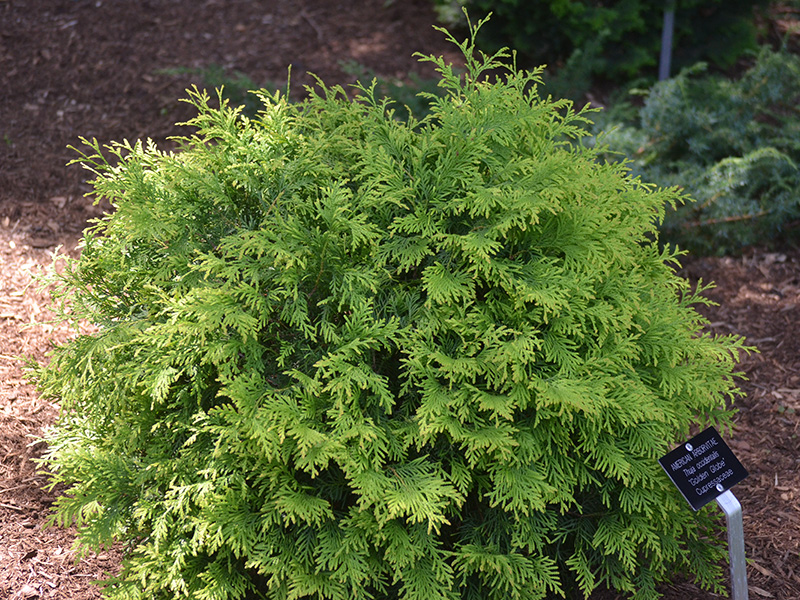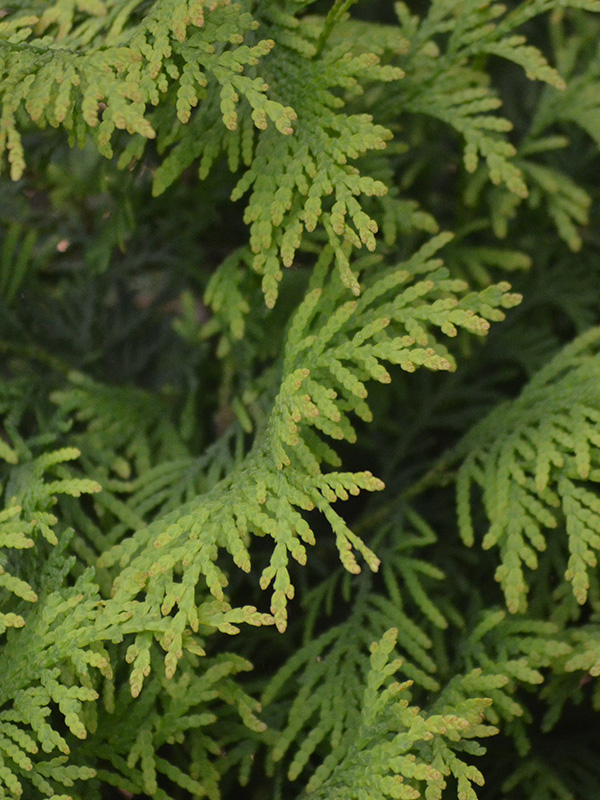| General Description | A dense, multi-stemmed, dwarf, yellow-golden evergreen with uniform, broad, 'globe-like' growth. |
| ID Characteristic | Identified by its golden-yellow, dense, globe shaped form. |
| Shape | Dwarf, dense, multi-stemmed, naturally rounded form even without pruning. |
| Landscape | Looks great when used in the garden, as an accent plant, in hedges/screening, and as mass planting. With its dense, globe-shape growth habit, low maintenance and beautiful year round interest, this specific specimen is certainly an ideal plant to add value to a landscape. |
| Propagation | Cuttings planted in well drained soil with bottom heat. Rooting time 60-150 days and it will take 1-2 years to produce a 3 litre plant. |
| Cultivation | Prefers full sun or partial shade as well as average to moist, well drained soil conditions with a 4.5-8 pH level. This specimen can not be left to dry out, but will not tolerate wet feet either. Golden Globe's new growth should be pruned in the early spring to reduce the incidence of leaf burn. After planted it would be beneficial to add a layer of mulch to promote good root growth. It is somewhat tolerant of urban pollution. |
| Pests | No serious diseases, although bagworms and spider mites may be found. Note that arborvitae plants are susceptible to tip blight. |
| Notable Specimens | Whistling Gardens, Wilsonville, Ontario, Canada.The Gardens of Fanshawe College (Conifer Garden), London, Ontario, Canada. |
| Habitat | Horticultural origin. |
| Bark/Stem Description | The bark, although well hidden by the dense foliage, is a red-brown in colour. |
| Flower/Leaf Bud Description | Bright brown buds. |
| Leaf Description | Leathery, fine, scaled leaves. The foliage, as is the case with most arborvitae when crushed, may cause an allergic skin irritation in some individuals. |
| Colour Description | Features showy gold-green foliage all season, yellow-gold colour in spring, harvest gold colour in autumn. In winter bronze-honey orange colour may be present. |
| Texture Description | A fine textured plant but with a medium-dense regular form. |

